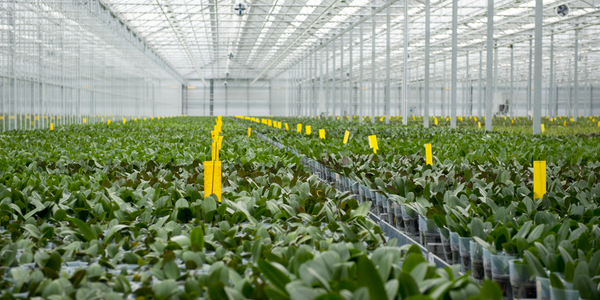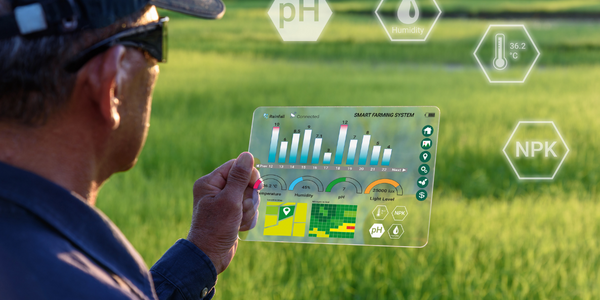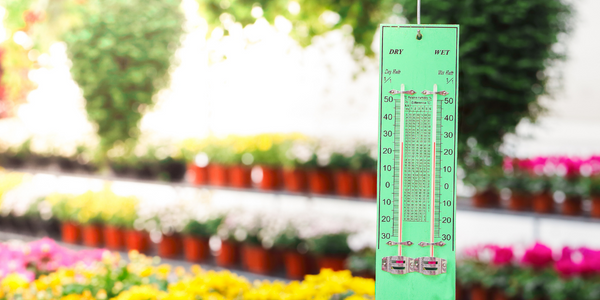Jain Irrigation Systems Slashed Freight Costs by 40% & Enhanced Cx Using Smartbidding & Realtime Container Tracking
Customer Company Size
Large Corporate
Product
- Shipsy Real-Time Container Tracking Solution
- Shipsy Intelligent Freight Procurement
- Shipsy E-Auctions Portal
Tech Stack
- Real-Time Tracking
- Automated Procurement
- Multimodal Logistics Operations
Implementation Scale
- Enterprise-wide Deployment
Impact Metrics
- Cost Savings
- Productivity Improvements
- Customer Satisfaction
Technology Category
- Functional Applications - Remote Monitoring & Control Systems
- Functional Applications - Enterprise Resource Planning Systems (ERP)
Applicable Industries
- Agriculture
Applicable Functions
- Logistics & Transportation
- Business Operation
Use Cases
- Track & Trace of Assets
- Fleet Management
- Predictive Maintenance
Services
- System Integration
- Software Design & Engineering Services
About The Customer
Jain Irrigation Systems is the largest micro-irrigation company in the world, with 33 manufacturing bases across the globe. The company has a vast network of over 11,000 dealers and distributors worldwide and supplies products to more than 126 countries. Jain Irrigation impacts the lives of over 10 million farmers, providing them with innovative irrigation solutions. The company is known for its commitment to sustainable agriculture and has been a pioneer in the micro-irrigation industry. With a strong focus on research and development, Jain Irrigation continues to lead the market by offering advanced and efficient irrigation systems that help farmers increase their productivity and conserve water.
The Challenge
Lack of real-time shipment visibility, growing freight costs, manual documentation processes among others were weighing down the client’s logistics operations. Here's a look at some of their key challenges:\n\nInability to create a real-time container tracking environment for end customers\nLimited to no visibility of container ETAs\nA rapid increase in freight costs due to gratuitous preferences of shipping lines and freight forwarders (FFs)\nLack of interdepartmental visibility of shipping lines and FF selection processes\nManual accounting and record-keeping processes resulting in costly errors & productivity loss\nEmail-based collaboration causing delays in communications
The Solution
The client deployed Shipsy's real-time shipment tracking solution that provides a single dashboard to gain greater visibility and control of container movement across multimodal logistics operations. Once realizing the ROI of Shipsy’s solution, Jain Irrigation rapidly began to leverage other features of the platform, like intelligent freight procurement, shipment execution, invoicing, and collaboration.\n\nShipsy empowered Jain Irrigation to drive significant cost savings, ensure process transparency, and enhance collaboration across users within the organization and their customers. The solution included automated procurement negotiations, which helped in reducing costs and eliminating undue preferences of shipping lines and freight forwarders. Additionally, the e-auctions portal facilitated competitive bidding, further driving down costs. The platform's user-friendly interface allowed for quick adoption without the need for extensive training, enabling Jain Irrigation to scale its usage efficiently.
Operational Impact
Quantitative Benefit

Case Study missing?
Start adding your own!
Register with your work email and create a new case study profile for your business.
Related Case Studies.

Case Study
Intelligent Farming with ThingWorx Analytics
Z Farms was facing three challenges: costly irrigation systems with water as a limited resource, narrow optimal ranges of soil moisture for growth with difficult maintenance and farm operators could not simply turn on irrigation systems like a faucet.

Case Study
Greenhouse Intelligent Monitoring and Control Solution
Farming Orchids is the most successful form of precision farming in Taiwan, and also the most exported flower. Orchids need a specific temperature and humidity conditions to grow and bloom, and its flowering time may not be in line with market demands, so the price collapses when there is overproduction. Therefore, some farmers began to import automated greenhouse control systems for breeding and forcing, which not only improves quality, but also effectively controls the production period and yield to ensure revenue. In 2012, an orchid farmer built a Forcing Greenhouse of about 200 pings (approximately 661 Square Meters) in Tainan, Taiwan. The system integrator adopted Advantech’s APAX-5000 series programmable automation controllers to build the control platform, coupled with Advantech WebAccess HMI/SCADA software, to achieve cloud monitoring. The staff of the orchid field can monitor important data anytime via smart phone, iPad, and other handheld devices, and control the growth and flowering conditions. System requirements: In the past, most environmental control systems of orchid greenhouses in Taiwan used PLCs (Programmable Logic Controller) with poorscalability and control, and could not be connected to the Internet formonitoring from the cloud. For advanced database analysis and networking capability, the PC platform must be adopted. Therefore, PAC Systems (Programmable Automation Controller) with both PLC programming capabilities andPC functions is a better choice.The environmental control of the Orchid greenhouse switches on and off devices like fan, shade net, cooling/heat pump, liquid flow control, water-cooling wall etc. It is controlled by a control panel of electric controllers, and is driven by a motor, to adjust the greenhouse temperature, humidity, and other environmental conditions to the set parameters.

Case Study
Enabling Internet of Things Innovation in Agriculture
DigiBale, wanted to apply technology know-how and IP from implementations successfully to more agriculture sectors including cotton, forestry, sugarcane and cattle. However, farmers and growers still have worries about the connected technology.

Case Study
Precision beekeeping with wireless temperature monitoring
Honeybees are insects of large economic value and provide a vital service to agriculture by pollinating a variety of crops. In addition, bees provide us with valuable products such as honey, beeswax, propolis, bee venom, etc. Monitoring of honeybee colony health, population, productivity, and environmental conditions affecting the colony health have always been exceedingly difficult tasks in apiculture. Research has shown that even small deviations (by more than 2°C) from the optimal temperatures have a significant influence on the development of the brood and the health of adult bees.




